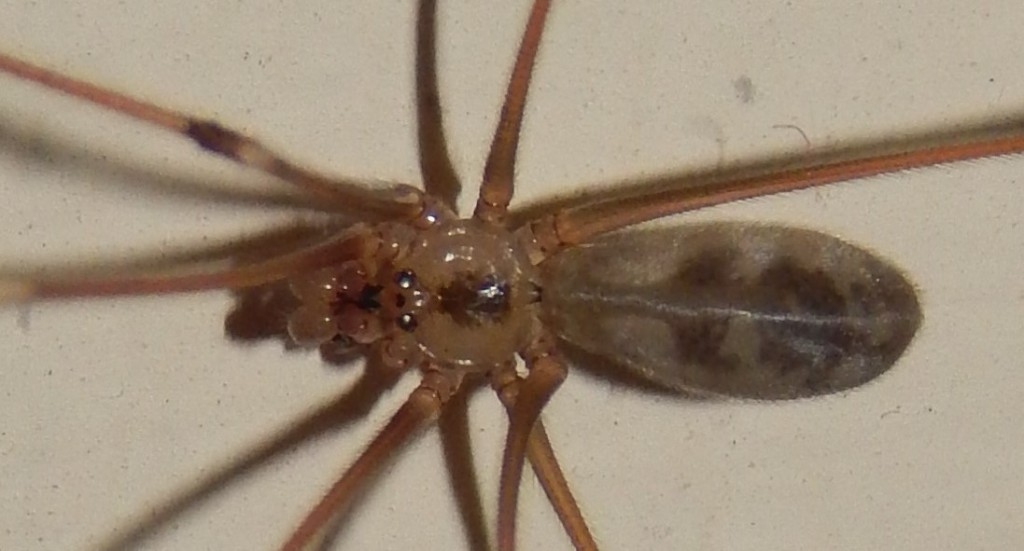
[258] Pholcus phalangiodes, Cellar Spider
Introduction
Pholcus phalangioides, the Cellar Spider, is a long-legged spider native to Asia but now commonly seen in houses in Britain. To some people it is a welcome visitor as it is good at catching and eating other spiders and arthropods.
It may also be called the Long-bodied Cellar Spider, Skull Spider, Daddy Long-legs Spider or just Daddy Long-legs.
This is a classic example of the ambiguity of common names. The name Daddy Long-legs (or Longlegs) is variously used around the World. In the UK it normally means Craneflies – see [235] Nephrotoma and [342] Tipula. In general, in can also be used for Harvestmen, Opiliones, an order of eight-legged arachnids that are not classified as Spiders, or any spider in the family Pholcidae. In biology it can refer to Stylidium divaricatum, a triggerplant found in Western Australia.
Taxonomy
Kingdom – Animals
Phylum – Arthropods
Subphylum – Chelicerata (Arachnids and Sea Spiders)
Class – Arachnida (Eight-legged – Spiders, Harvestmen and others)
Order – Araneae (Spiders)
Suborder – Opisthothelae (All spiders except one extant family)
Infraorder – Araneomorphae (Spiders excluding Tarantulas)
Family – Pholcidae
Genus – Pholcus
Scientific Name – Pholcus phalangioides
Name
Most houses today don’t have cellars but this species prefers darkly lit corners. While all the various organisms called Daddy Longlegs are not taxonomically linked, they are similar and they do have long legs!
Pholcus is Latinized from Greek pholkos, bow-legged. The species epithet comes from Phalangioidea, a superfamily of Harvestmen, named from its type genus Phalangium. The Latin phalangium, meaning a type of spider, comes from Ancient Greek phalangion, a diminutive of phalanx, a battle array.
Description
For a spider, the body of Pholcus phalangioides is not particularly large. In homes in Britain these spiders may be less obvious than [131] the Giant House Spider or the False Widow Spiders, Steatoda.
Their legs are much longer and thinner than other spiders that you may find in the UK. Typically, the body is about eight millimetres in length, with a leg span of about 50 mm.
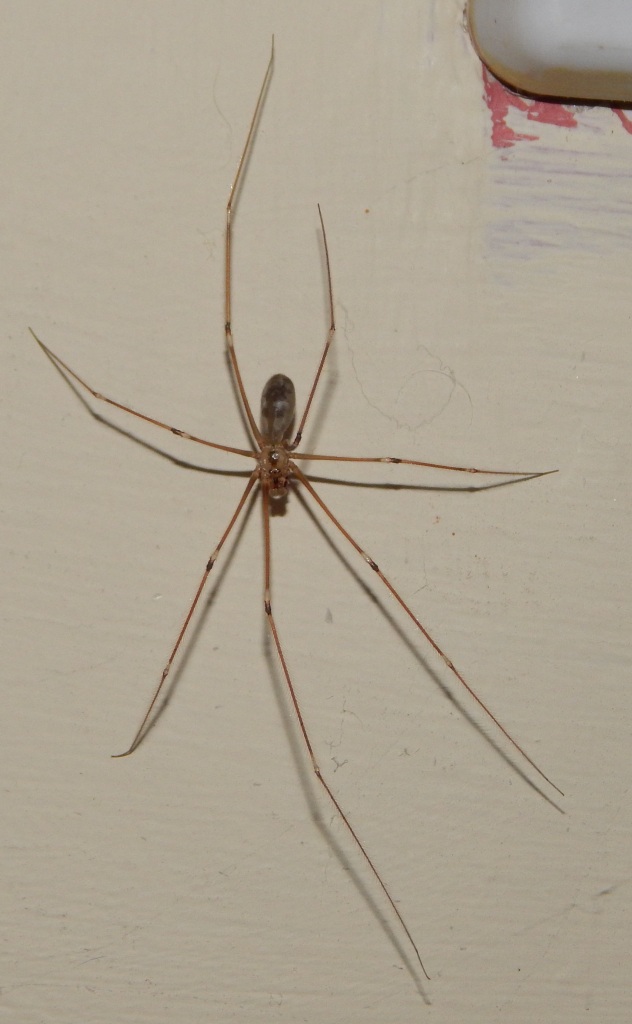
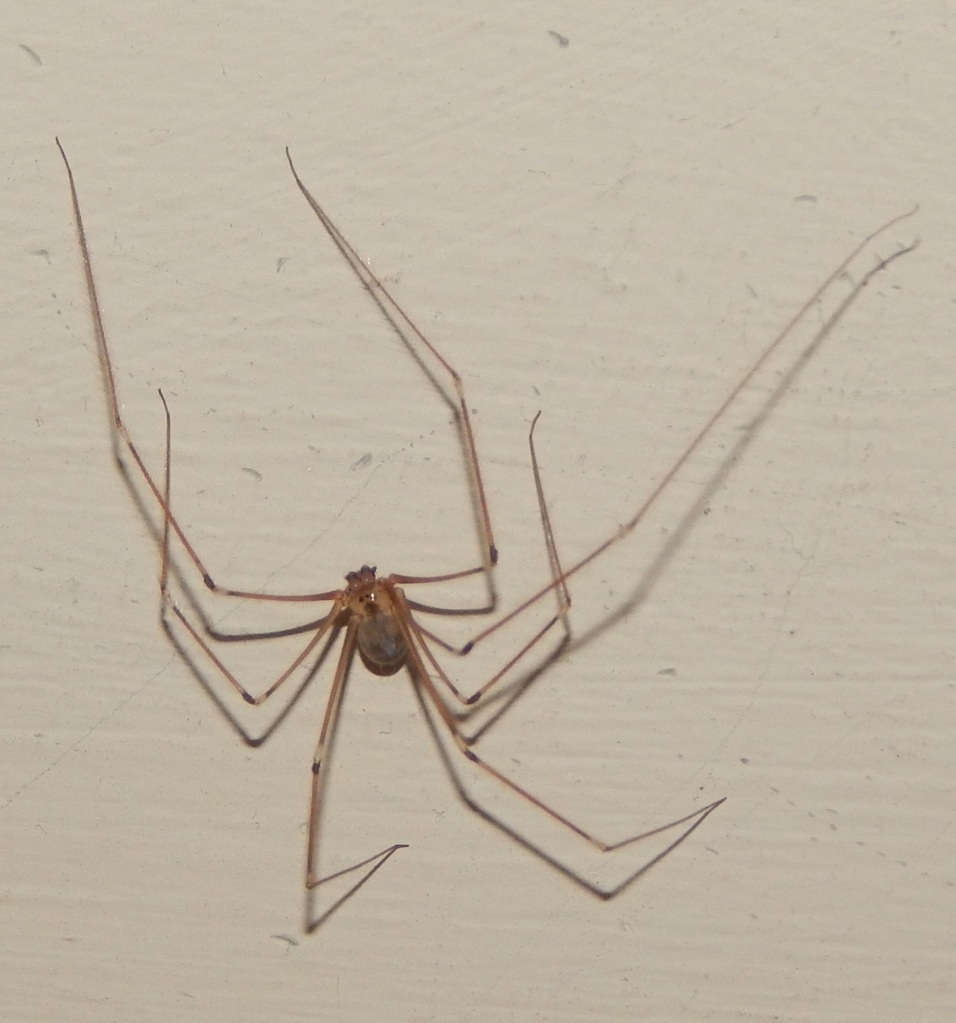
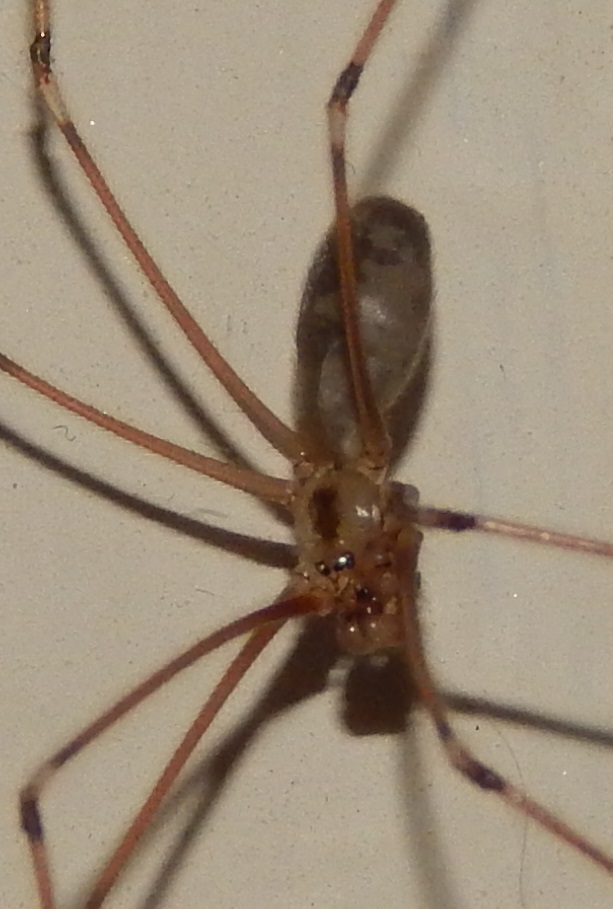
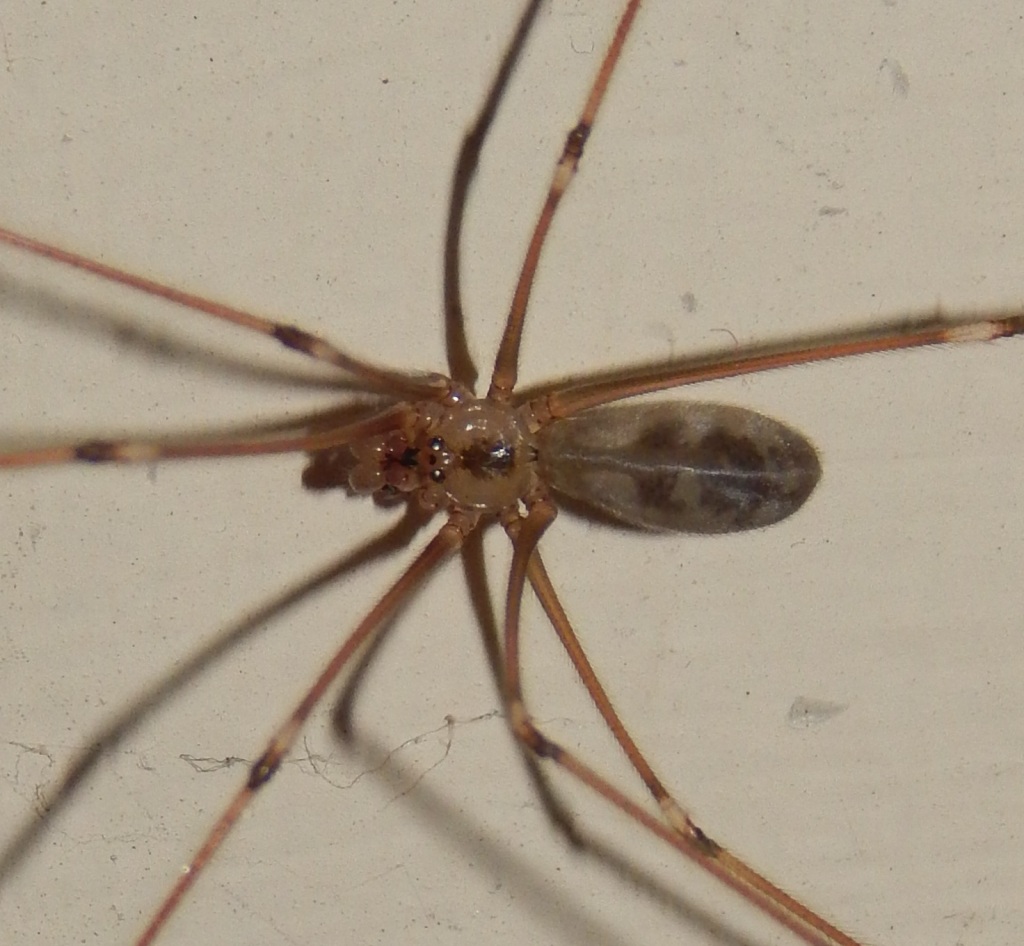
Females are slightly larger than males. I think this next picture was a male spider tentatively approaching a female.
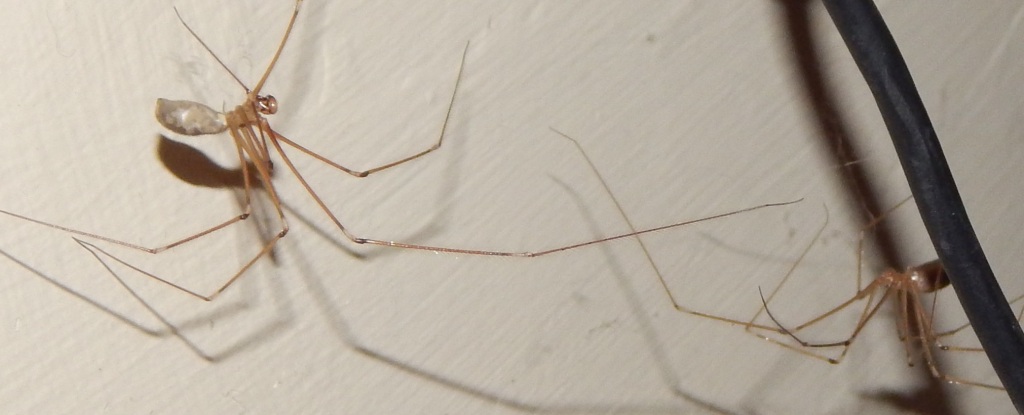
Their webs are small and untidy and they will often leave the web to hunt for prey, particularly other spiders.
They may live close to others of the same species, even merging their webs a little. But in times of need both males and females may resort to cannibalism.
Habitat and use
Pholcus phalangioides is native to subtropical Asia but has spread to most of the World, where it is found almost exclusively in houses – generally in quiet, darkly lit corners.
Other Notes
Here is a Cellar Spider and its prey, photographed in my home.

The unfortunate victim is a Volucella pellucens, a close relative of [361] the Hornet Mimic Hoverfly
See also
Not closely related, but sharing the name Daddy Longlegs are the Harvestmen, Opiliones.
Taxonomically they are more closely related to mites than to spiders and scorpions, but superficially they have the same appearance with eight very long, thin legs. Whereas spiders have two body segments, generally called the cephalothorax and abdomen (but more accurately the prosoma and opisthosoma,) harvestmen appear to have just one. (There are still two segments but they are joined in an oval shape with no apparent ‘waist.’)
- Leiobunum rotundum is common and widespread throughout Britain and may be found in any undergrowth or vegetation.
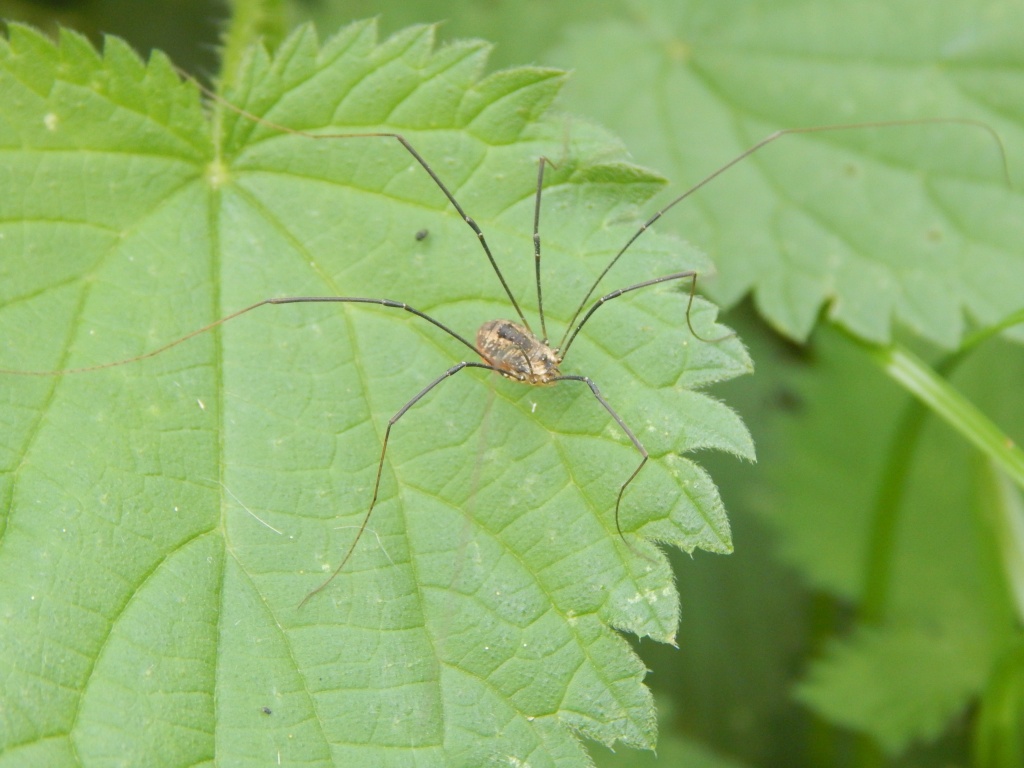
- Platybunus triangularis (or Paraplatybunus triangularis or Rilaena triangularis) is another common UK species found generally in forests or among ferns.

- Dicranopalpus ramosus, originally found in Morocco, spread into and across Europe from about 1950. By 2000 it has spread as far North as Scotland. It may be found in England resting on garden walls.


